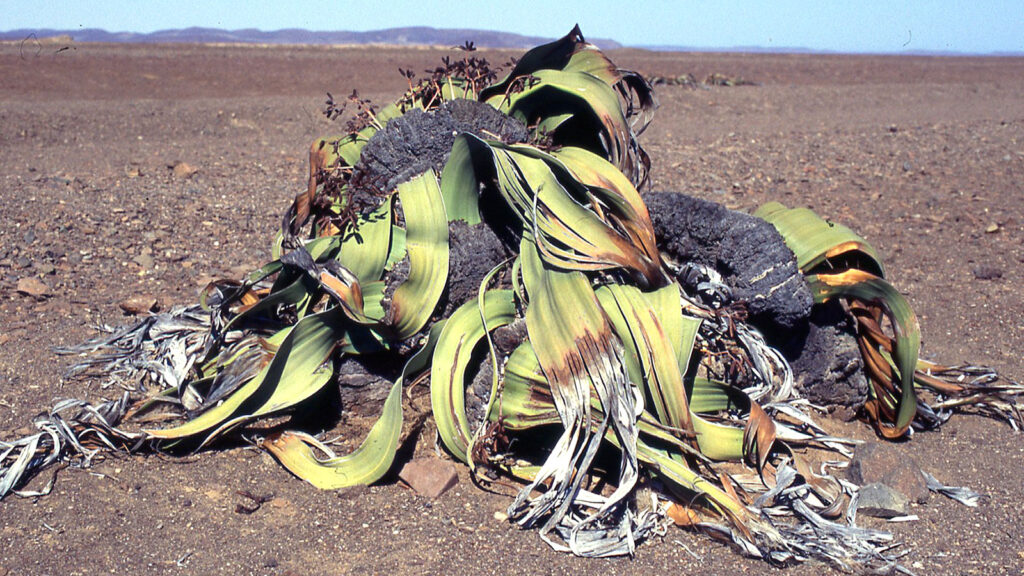Higher life owes its existence to the abilities of the green dye chlorophyll to convert energy according to the principle of kinetic solar cells (Ref. 426). In addition, evolution had to develop the most sophisticated technologies to make a tree like Welwitschia mirabilis (see image), for example, able to survive in the hostile, arid Namib Desert.
Fascinated by the way dyes work in photosynthesis, I was already highly motivated to experiment with them as a student. I coated zinc oxide electrodes with various dyes and developed and demonstrated the first dye solar cells. This happened first as part of my doctoral thesis in Heinz Gerischer’s laboratory in Munich (1968) and then as a scholarship holder in collaboration with Melvin Calvin in Berkeley (1969 – 1971) (Refs. 8, 10, 374, 420 in the list of publications).
Dyes, such as the green plant pigment chlorophyll, can absorb sunlight, feed electrons into light-transmitting materials and – this was the most important discovery – operate a photovoltaic cell in this way. The first cells still had low stability and yield, but already imitated the principle of primary photosynthesis and pointed the way for the development of artificial dye solar cells.


 Deutsch
Deutsch Italiano
Italiano